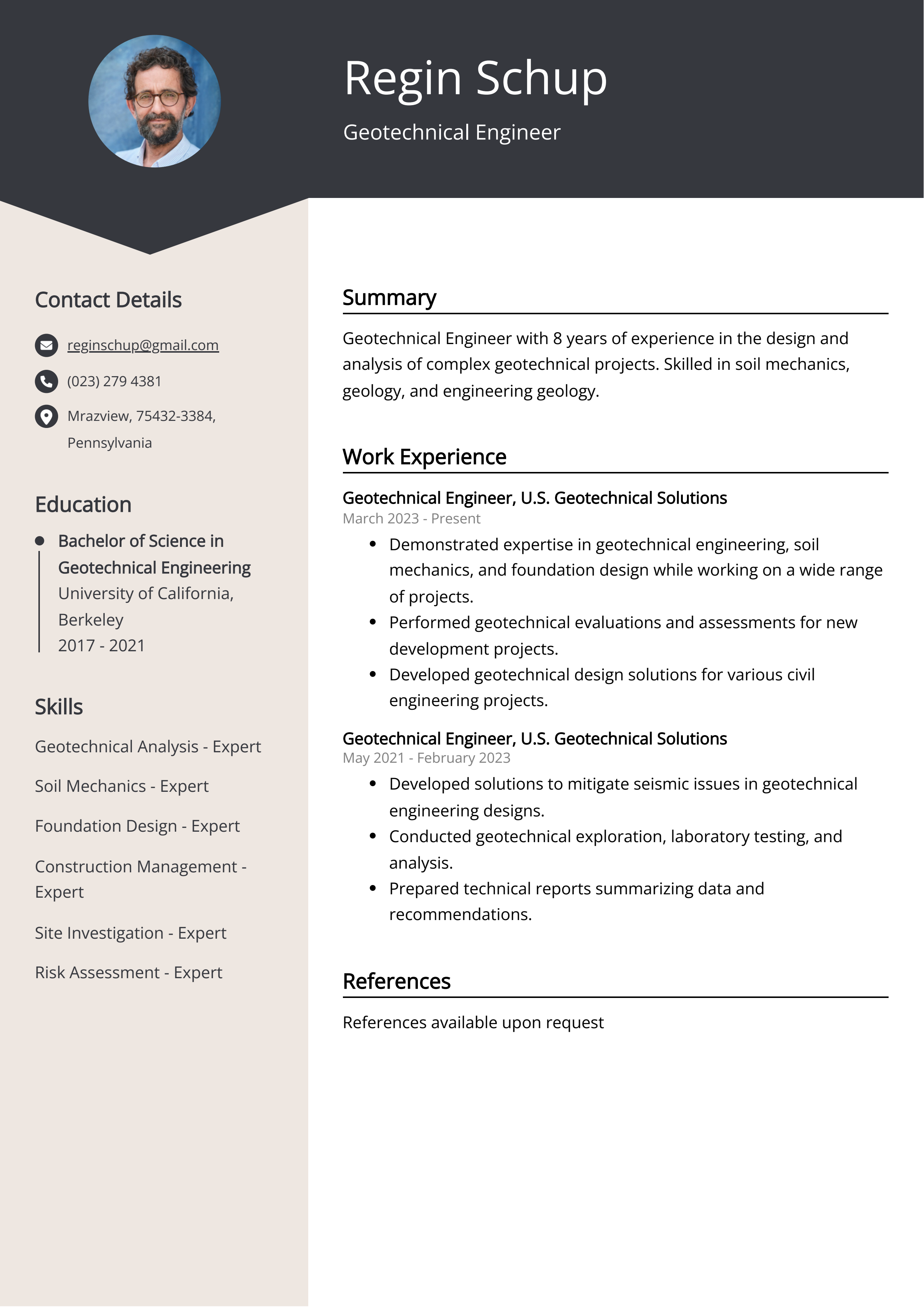The Definitive Guide for Geotheta
The Definitive Guide for Geotheta
Blog Article
9 Easy Facts About Geotheta Explained
Table of Contents7 Simple Techniques For GeothetaSome Ideas on Geotheta You Should KnowGeotheta for BeginnersGet This Report on Geotheta
They work together with civil designers, architectural designers, engineers, and other professionals to integrate geotechnical factors to consider into the general job layout and building and construction process. This requires effective synergy, control, and interaction to ensure that the geotechnical elements straighten with the project goals and fulfill regulative demands.Mining & Products Engineering: Principles of boring, penetration prices, and aspects impacting the selection of boring approach. Characteristics of nitroglycerins, firing systems and blast patterns. Blowing up methods in surface and underground functions. Special blasting techniques at excavation perimeters. Vibration and sound control. Mechanical and constant approaches to fragmentation, including longwall shearing and fullface boring.
Modelling of piece and particle size distributions; comminution as a transfer feature. Comminution modern technology: crushing, grinding, dimension classification. Integrated evaluation of fragmentation and comminution operations. Used by: Mining & Materials Engineering.
How Geotheta can Save You Time, Stress, and Money.
Bachelor's degree programs in civil, geotechnical, geological, and ecological design typically last four years and include general education programs in English, social science, and the humanities, as well as courses in advanced mathematics, architectural geology, and liquid mineralogy. (https://packersmovers.activeboard.com/t67151553/how-to-connect-canon-mg3620-printer-to-computer/?ts=1722609175&direction=prev&page=last#lastPostAnchor)
Geotechnical design involves the evaluation of the soil and rock problems at a certain site, and their ramifications for the growth of that website. As a lot of structures count on the ground for support, it lacks shock that a comprehensive understanding of the ground conditions, and the suitability of structure systems, are crucial to the lasting security and performance of the structure or framework.
Specialising in the examination of geological developments and ground practices, geotechnical designers execute clinical examinations and screening to comprehend the effect these geological developments might have on the design and construction of building, civil and infrastructure jobs. This experience is vital for the layout and construction of buildings, roadways, tunnels, dams, bridges, and water and sewer system.
The geotechnical group at Douglas Partners routinely seek advice from architects, design engineers, developers, and home builders to make suggestions on style and advancement proposals to guarantee that the developed structures are suitably designed for the ground problems. As an example, the layout of footing systems requires to consider the weight of the structure, the capability of the ground to sustain that weight with each other with movement resistances and reliable building and construction.
Geotheta for Beginners
This job is greatly simplified by the use our Douglas Map geospatial system that makes this info conveniently obtainable in a very easy to use internet internet browser user interface. A geotechnical designer will certainly guide the exploration of boreholes and test pits to collect soil and various other samples, and additionally evaluate surface area features and ground direct exposures to form a geotechnical design of the subsurface conditions.
Relying on the project type and ground problems experienced, research laboratory screening may among various other things analyze strength, compressibility, sensitivity and/or leaks in the structure of soil and rock samples. Hereafter data is gathered and collected, the outcomes are used for a geotechnical this link model of the website, which is generally provided as areas across the site.

A geotechnical investigation by nature can only evaluate the ground problems at the places pierced or excavated. All-natural variants in soil and rock problems can take place across a website and in between test areas. It is for that reason great method that the geotechnical engineer be maintained throughout building and construction of the job to provide on-site confirmation that the ground problems experienced follow the assumptions and advice given in the geotechnical investigation record.
Some Ideas on Geotheta You Should Know
Geotechnical designers utilize their extensive understanding of soil and rock to assess risk and solve troubles on varied framework projectsGeotechnical design is a specialist branch of civil design which checks out the behavior of earth products and the application of soil and rock mechanics. Engineer of Record. As a geotechnical designer, you will analyze the physical, mechanical and chemical properties of dirt and rock in order to develop foundations, keeping frameworks and earthworks
Geotechnical engineering is carefully linked to and overlaps with, both design geology and ground engineering - https://www.tumblr.com/geotheta/757702666915840000/geotheta-has-grown-exponentially-since?source=share. It's possible to be experts in geotechnics or work for a geotechnical company but be understood as an engineering geologist or a ground designer. As a geotechnical designer, you'll require to: develop and keep partnerships with clients and other professionals involved in the website, throughout each projectmaintain safety and security standards on website bear in mind cost implications when you make recommendationsstudy geological maps and aerial pictures from a variety of resources and from various time periodsexamine building and construction plans to see exactly how possible they are based upon your understanding of the siteinvestigate threats or geological dangers for the sitesearch for ecologically sensitive attributes, such as land fill start to create accurate and interpretive ground modelsplan area investigationsdrill and analyse examples of bedrock, soil, groundwater and additional materials monitor other experts on sitesolve technical concerns as they develop, such as unexpected frameworks at drill sitesmonitor problems during and after building to see to it structures are steady in the short and long termadding data accumulated on website to your first researchcreating geotechnical calculations, illustrations, and 2 or three-dimensional computer system models translating the datamaking referrals regarding the recommended use the website

Report this page